Maintaining physical activity for Golden Retrievers with arthritis requires a delicate balance between providing necessary exercise for joint health and muscle strength while avoiding activities that could worsen joint pain or cause additional damage. Understanding appropriate low-impact exercise options helps families keep their arthritic companions active, healthy, and comfortable throughout their senior years.
Arthritis affects a significant percentage of senior Golden Retrievers, causing joint pain, stiffness, and reduced mobility that can dramatically impact quality of life if not properly managed through appropriate exercise and movement strategies. The key lies in selecting activities that promote joint flexibility and muscle strength without placing excessive stress on compromised joints.
Low-impact exercise programs for arthritic Golden Retrievers focus on gentle movement that maintains range of motion, supports muscle tone, and provides mental stimulation while respecting pain limitations and physical capabilities that may fluctuate from day to day.
Understanding Arthritis and Exercise Benefits
Arthritis Impact on Joint Function
Joint Changes and Limitations
Arthritis in Golden Retrievers involves inflammation and degeneration of joint cartilage, leading to pain, stiffness, and reduced range of motion that affects normal movement patterns and activity levels.
The condition typically affects weight-bearing joints such as hips, elbows, knees, and spine, creating movement challenges that require careful exercise selection to avoid exacerbating pain or inflammation.
Understanding how arthritis affects specific joints helps guide exercise choices that work around limitations while supporting overall health and maintaining functional mobility for daily activities.
Exercise Benefits for Arthritic Dogs
Regular, appropriate exercise helps maintain joint flexibility by promoting synovial fluid production that lubricates joints and provides nutrients to cartilage tissue that lacks direct blood supply.
Gentle movement helps prevent joint stiffness by maintaining range of motion while supporting muscle strength that provides crucial joint stability and reduces stress on damaged cartilage.
Exercise also promotes circulation, helps manage weight that reduces joint stress, and provides mental stimulation that supports overall well-being despite physical limitations.
Exercise Physiology for Joint Health
Low-Impact Versus High-Impact Activities
Low-impact exercises minimize joint compression and jarring while still providing beneficial movement that supports joint health, muscle strength, and cardiovascular fitness for arthritic dogs.
High-impact activities such as running, jumping, or sudden direction changes can worsen arthritis symptoms by placing excessive stress on already compromised joints, potentially causing additional damage or inflammation.
Understanding the distinction between beneficial low-impact movement and potentially harmful high-impact activities helps families select appropriate exercises that support rather than compromise joint health.
Water-Based Exercise Programs
Swimming Benefits and Techniques
Hydrotherapy Advantages
Swimming provides excellent exercise for arthritic Golden Retrievers because water buoyancy reduces joint weight-bearing stress while providing resistance that strengthens muscles without jarring movements.
The hydrostatic pressure of water helps reduce swelling and inflammation while supporting circulation that promotes healing and comfort in arthritic joints.
Temperature-controlled water therapy pools provide optimal conditions for therapeutic exercise, with warm water helping to relax muscles and reduce stiffness before and during exercise sessions.
Safe Swimming Practices
Gradual introduction to swimming helps build confidence and conditioning while preventing overexertion that could cause fatigue or injury in dogs new to water exercise.
Supervision and flotation devices ensure safety while allowing dogs to focus on movement rather than staying afloat, maximizing therapeutic benefits while preventing anxiety or exhaustion.
Session duration should start conservatively and increase gradually based on individual tolerance, typically beginning with 5-10 minutes and building to 15-20 minutes as fitness improves.
Alternative Water Exercises
Underwater Treadmill Therapy
Underwater treadmills provide controlled water exercise that allows precise adjustment of water depth, speed, and resistance to match individual capabilities and therapeutic goals.
The controlled environment enables specific gait training and muscle strengthening while providing the joint protection benefits of water buoyancy during weight-bearing movement.
Professional supervision during underwater treadmill sessions ensures appropriate intensity and helps monitor for fatigue or discomfort that might require session modification.
Low-Impact Exercise Guide for Arthritic Golden Retrievers
| Exercise Type | Benefits | Duration | Frequency | Precautions | Progression Guidelines |
|---|---|---|---|---|---|
| Swimming | Full-body, joint-friendly cardio | 5-20 minutes | 2-3 times weekly | Water temperature, supervision needed | Gradual time increases |
| Gentle Walking | Joint mobility, muscle maintenance | 10-30 minutes | Daily | Avoid hard surfaces, monitor pace | Distance increases as tolerated |
| Range of Motion | Flexibility, stiffness prevention | 5-10 minutes | Daily | Gentle pressure only | Gradual range increases |
| Balance Exercises | Core strength, stability | 5-15 minutes | 3-4 times weekly | Safe surfaces, supervision | Complexity increases slowly |
| Massage Therapy | Circulation, pain relief | 10-20 minutes | Daily or as needed | Gentle pressure, avoid inflamed areas | Technique refinement over time |
| Mental Stimulation | Cognitive health, reduced boredom | 10-30 minutes | Daily | Age-appropriate difficulty | Challenge level adjustments |
Land-Based Low-Impact Activities
Walking Modifications
Surface Selection and Route Planning
Choosing soft surfaces such as grass, sand, or dirt paths reduces joint impact compared to concrete or asphalt, providing more comfortable walking experiences for arthritic dogs.
Avoiding hills, stairs, and uneven terrain helps prevent excessive joint stress while reducing the risk of falls or injuries that could worsen arthritis symptoms.
Planning shorter, more frequent walks allows for exercise benefits while preventing overexertion that could cause increased pain or stiffness following activity.
Pace and Duration Adjustments
Allowing dogs to set their own comfortable pace prevents overexertion while ensuring that movement remains beneficial rather than painful or stressful.
Starting with shorter distances and gradually increasing based on individual tolerance helps build endurance while respecting joint limitations and pain levels.
Monitoring for signs of fatigue, increased panting, or reluctance to continue helps ensure that walks remain therapeutic rather than overwhelming for arthritic dogs.
Controlled Movement Exercises
Range of Motion Activities
Gentle passive range of motion exercises help maintain joint flexibility by moving joints through their available range without forcing movement beyond comfortable limits.
These exercises can be performed during quiet bonding time, incorporating gentle stretching into petting sessions or massage routines that dogs find relaxing and pleasant.
Understanding proper technique prevents injury while maximizing therapeutic benefits, often requiring initial guidance from veterinary professionals or certified canine rehabilitation therapists.
Balance and Stability Training
Simple balance exercises using stability aids such as balance discs or wobble boards help strengthen core muscles that support joint stability and improve proprioception.
These exercises should be introduced gradually with support and encouragement, allowing dogs to build confidence while developing better balance and coordination.
Indoor balance training provides weather-independent exercise options that can be easily incorporated into daily routines regardless of outdoor conditions or scheduling constraints.
Therapeutic Exercise Techniques
Massage and Manual Therapy
Benefits of Therapeutic Touch
Gentle massage helps improve circulation, reduce muscle tension, and provide pain relief while strengthening the bond between dogs and their caregivers through positive physical contact.
Understanding basic massage techniques allows families to provide daily therapeutic touch that complements other exercise interventions while promoting relaxation and comfort.
Massage sessions can serve as warm-up activities before exercise or cool-down treatments after activity, enhancing the overall therapeutic value of exercise programs.
Proper Massage Techniques
Learning appropriate pressure levels, stroke directions, and area-specific techniques ensures that massage provides benefits without causing discomfort or aggravating sensitive joints.
Focus areas typically include muscles surrounding affected joints, with gentle circular motions and long strokes that promote circulation without applying excessive pressure.
Understanding when to avoid massage, such as during acute inflammation flares, helps ensure that therapeutic touch remains beneficial rather than potentially harmful.
Stretching and Flexibility Work
Active Stretching Exercises
Encouraging natural stretching behaviors such as play bows or gentle reaching movements helps maintain flexibility while allowing dogs to control the extent of stretching.
Interactive stretching games using treats or toys can motivate movement while making flexibility work enjoyable rather than feeling like medical treatment.
Understanding the difference between beneficial stretching and forced manipulation helps ensure that flexibility work remains safe and comfortable for arthritic dogs.
Passive Stretching Support
Gentle assisted stretching helps maintain range of motion in joints that dogs may not move fully on their own due to pain or stiffness.
These techniques require careful attention to the dog’s comfort level and should never force movement beyond what feels comfortable to the individual dog.
Professional instruction in passive stretching techniques helps families provide safe, effective flexibility support while avoiding potential injury from improper technique.
Environmental Modifications for Exercise
Indoor Exercise Alternatives
Weather-Independent Activities
Creating indoor exercise options ensures consistent activity regardless of weather conditions that might prevent outdoor exercise or make it uncomfortable for arthritic dogs.
Hallway walking, stair climbing (when appropriate), or indoor obstacle courses adapted for low-impact movement provide exercise alternatives during inclement weather.
Understanding space limitations and safety considerations helps families design indoor exercise programs that provide meaningful activity within available areas.
Exercise Equipment and Aids
Ramps, steps, and mobility aids help arthritic dogs access exercise areas safely while reducing joint stress from jumping or climbing activities.
Exercise mats provide cushioned surfaces for floor exercises while offering better traction that prevents slipping during movement activities.
Understanding appropriate equipment selection and safe usage helps maximize exercise benefits while preventing injuries that could worsen arthritis symptoms.
Outdoor Environment Optimization
Safe Exercise Areas
Identifying and creating safe outdoor exercise spaces with appropriate surfaces, secure boundaries, and hazard-free environments supports regular activity routines.
Fenced areas allow off-leash movement while providing security that enables dogs to move freely without concern about escape or traffic dangers.
Understanding environmental hazards such as ice, sharp objects, or toxic plants helps create safe exercise environments that prevent injuries during activity sessions.
Exercise Timing and Scheduling
Optimal Timing Strategies
Daily Rhythm Considerations
Many arthritic dogs experience increased stiffness in the morning, making afternoon or evening exercise more comfortable when joints have had time to warm up naturally.
Understanding individual patterns of pain and stiffness helps families schedule exercise sessions when dogs are most comfortable and likely to benefit from activity.
Consistency in exercise timing helps establish routines that dogs can anticipate while allowing their bodies to prepare for regular activity periods.
Weather and Season Adaptations
Cold weather often increases arthritis pain and stiffness, requiring indoor alternatives or modified outdoor activities during winter months or cold periods.
Warm weather may improve joint comfort but requires attention to hydration and overheating prevention during exercise sessions in higher temperatures.
Understanding seasonal variations in comfort levels helps families adapt exercise programs to maintain consistent activity despite changing weather conditions.
Frequency and Duration Guidelines
Individual Adaptation
Exercise frequency and duration should be tailored to individual dogs’ arthritis severity, overall health status, and response to activity rather than following rigid schedules.
Some dogs benefit from multiple short sessions throughout the day, while others prefer single longer sessions based on their energy patterns and joint comfort.
Understanding that flexibility in scheduling supports long-term compliance helps families create sustainable exercise routines that can be maintained consistently over time.
Pain Management and Exercise Integration
Pre-Exercise Preparation
Warm-Up Activities
Gentle warm-up activities such as slow walking or light massage help prepare joints for exercise by increasing circulation and reducing stiffness before more intensive movement.
Understanding the importance of gradual activity buildup helps prevent injury while maximizing exercise benefits through proper preparation of joints and muscles.
Warm-up routines should be adapted to individual needs and may require longer preparation time for dogs with severe arthritis or morning stiffness.
Pain Assessment
Daily pain assessment before exercise helps determine appropriate activity levels while ensuring that exercise sessions remain beneficial rather than harmful.
Understanding pain indicators such as reluctance to move, changes in gait, or behavioral changes helps guide exercise decisions and modifications.
Flexibility in exercise planning allows for reduced activity on high-pain days while maintaining routine on days when dogs feel more comfortable.
Post-Exercise Care
Cool-Down Procedures
Gentle cool-down activities help prevent stiffness by gradually reducing activity intensity while promoting circulation that supports recovery from exercise sessions.
Understanding the importance of gradual activity reduction helps prevent post-exercise stiffness while supporting the therapeutic benefits of movement.
Cool-down routines may include gentle walking, massage, or rest periods that allow joints to adjust gradually to reduced activity levels.
Recovery Monitoring
Observing dogs for increased pain, stiffness, or discomfort following exercise helps assess exercise appropriateness and guides program modifications.
Understanding normal versus concerning post-exercise responses helps families distinguish between beneficial exercise effects and signs that activity levels may need adjustment.
Documentation of exercise responses helps track progress and identify successful strategies while providing valuable information for veterinary consultations.
Long-Term Exercise Program Management
Progress Monitoring and Adjustment
Fitness Assessment
Regular assessment of exercise tolerance, joint mobility, and overall fitness helps guide program progression while ensuring that activities continue to provide benefits.
Understanding that arthritis is progressive helps families adapt exercise programs over time to accommodate changing capabilities while maintaining activity benefits.
Professional evaluation by veterinarians or certified canine rehabilitation therapists provides objective assessment of exercise program effectiveness and safety.
Program Modification
Exercise programs should evolve based on individual response, disease progression, and changing capabilities to maintain therapeutic benefits throughout the dog’s life.
Understanding when to increase, decrease, or modify exercise intensity helps ensure that programs remain appropriate and beneficial over time.
Flexibility in program design allows for adaptation to seasonal changes, health fluctuations, or other factors that might affect exercise capability or comfort.
Quality of Life Integration
Balancing Activity and Comfort
Successful exercise programs balance the need for movement and fitness with respect for pain limitations and individual comfort preferences.
Understanding that exercise goals may shift from performance improvement to maintenance or comfort support helps families maintain realistic expectations.
Celebrating small improvements and maintained abilities helps families stay motivated in providing consistent exercise support throughout their dog’s arthritis journey.
Low-impact exercise programs for Golden Retrievers with arthritis provide essential support for maintaining joint health, muscle strength, and overall quality of life while respecting the limitations imposed by painful joint conditions. Through careful selection of appropriate activities, consistent implementation, and ongoing adaptation to changing needs, families can help their arthritic companions remain active and comfortable.
Success in exercise management for arthritic dogs comes from understanding individual limitations, maintaining consistency in supportive activities, and adapting programs based on response and progression. With proper attention and professional guidance, most dogs with arthritis can maintain beneficial activity levels that support their health and happiness.
The commitment to providing appropriate exercise for arthritic Golden Retrievers demonstrates the dedication to maintaining their quality of life while managing chronic conditions that affect mobility and comfort. Through thoughtful exercise programs, these beloved companions can continue to enjoy movement and activity despite the challenges of arthritis.

Rafael Souza is a digital marketing strategist and lifelong dog enthusiast. Passionate about Golden Retrievers, he shares practical, research-based tips to help owners provide healthier and happier lives for their furry companions.

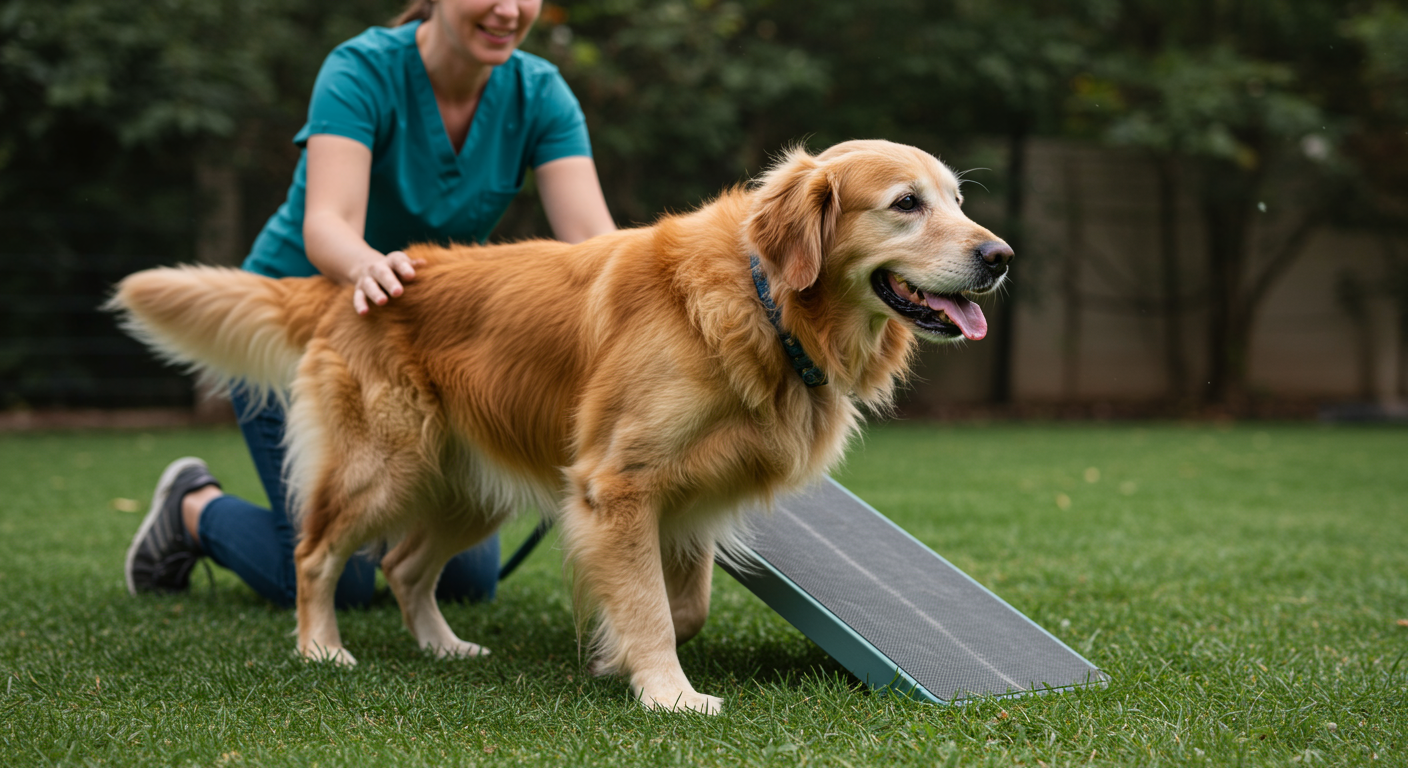
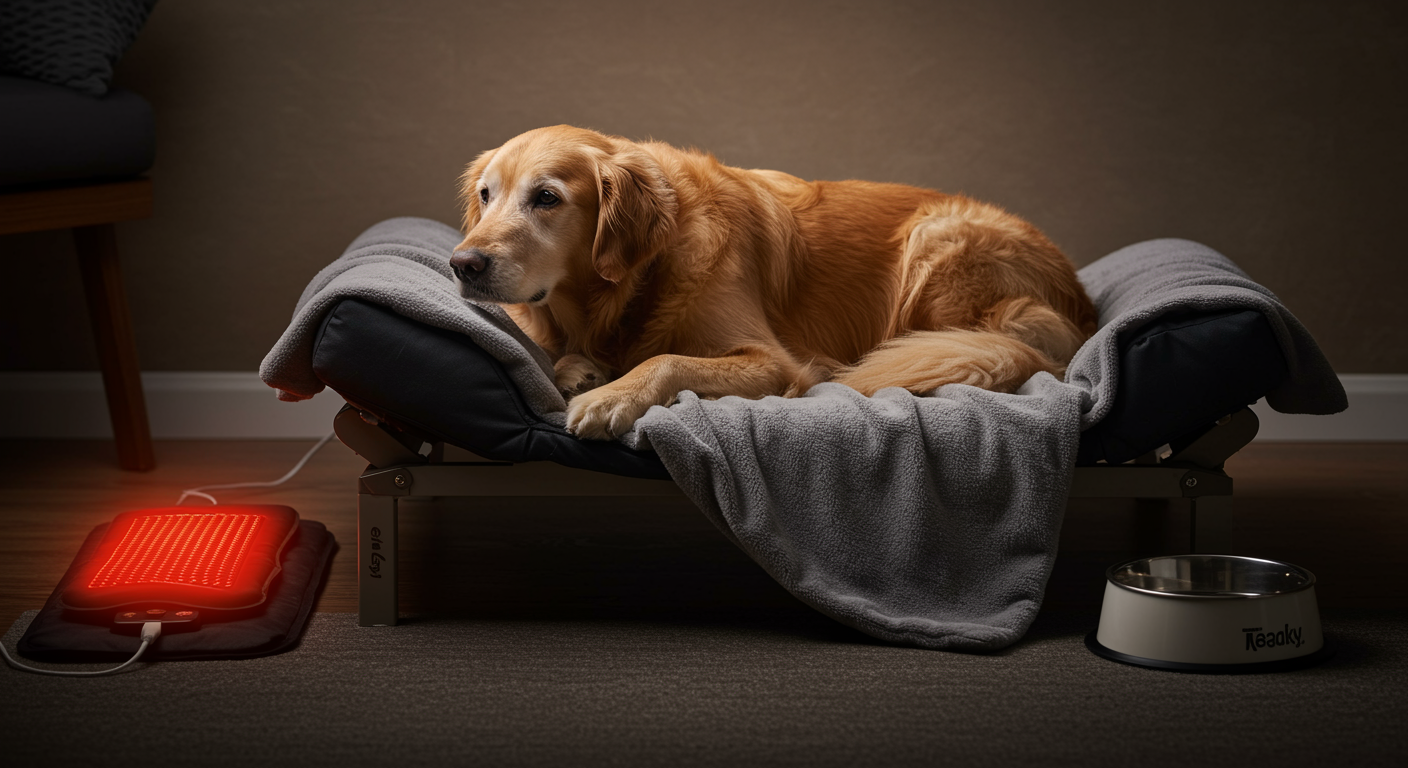
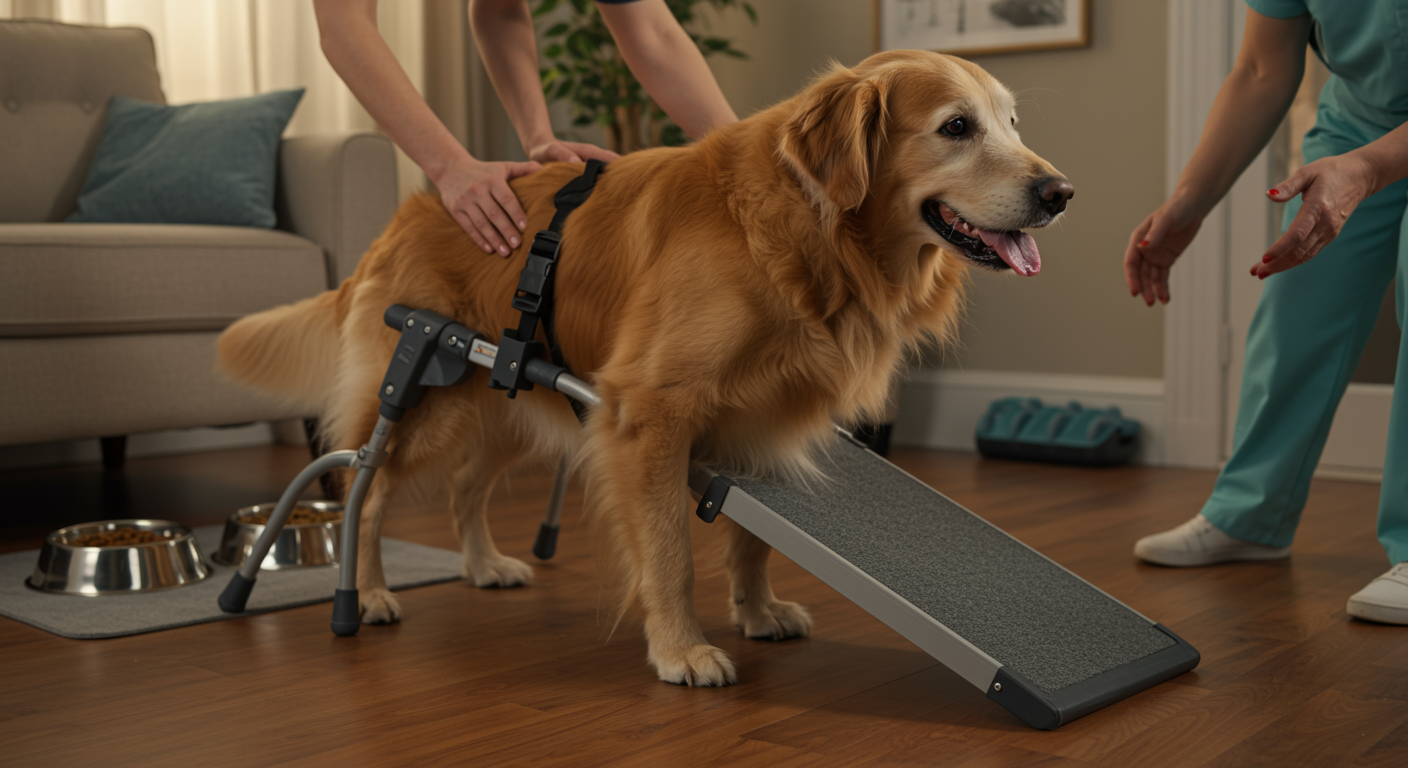
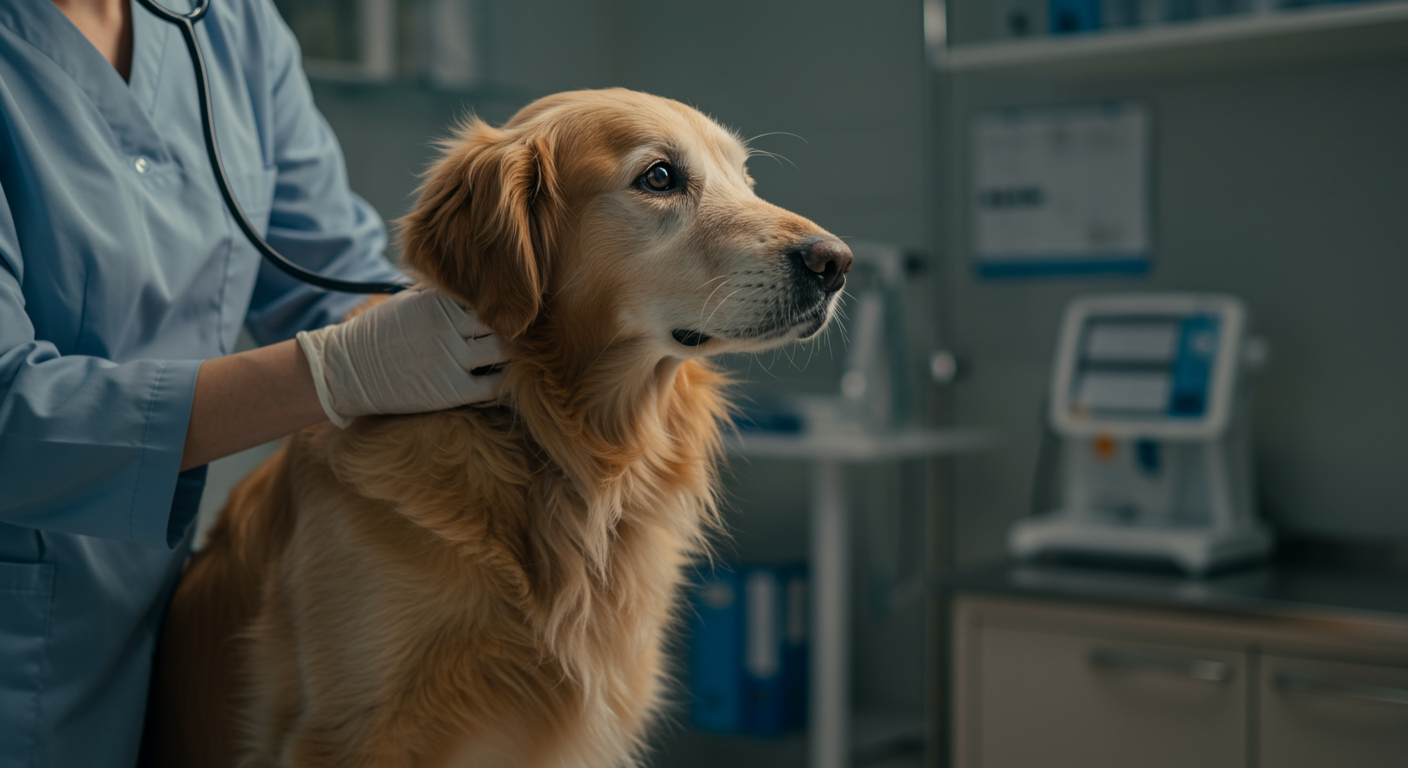
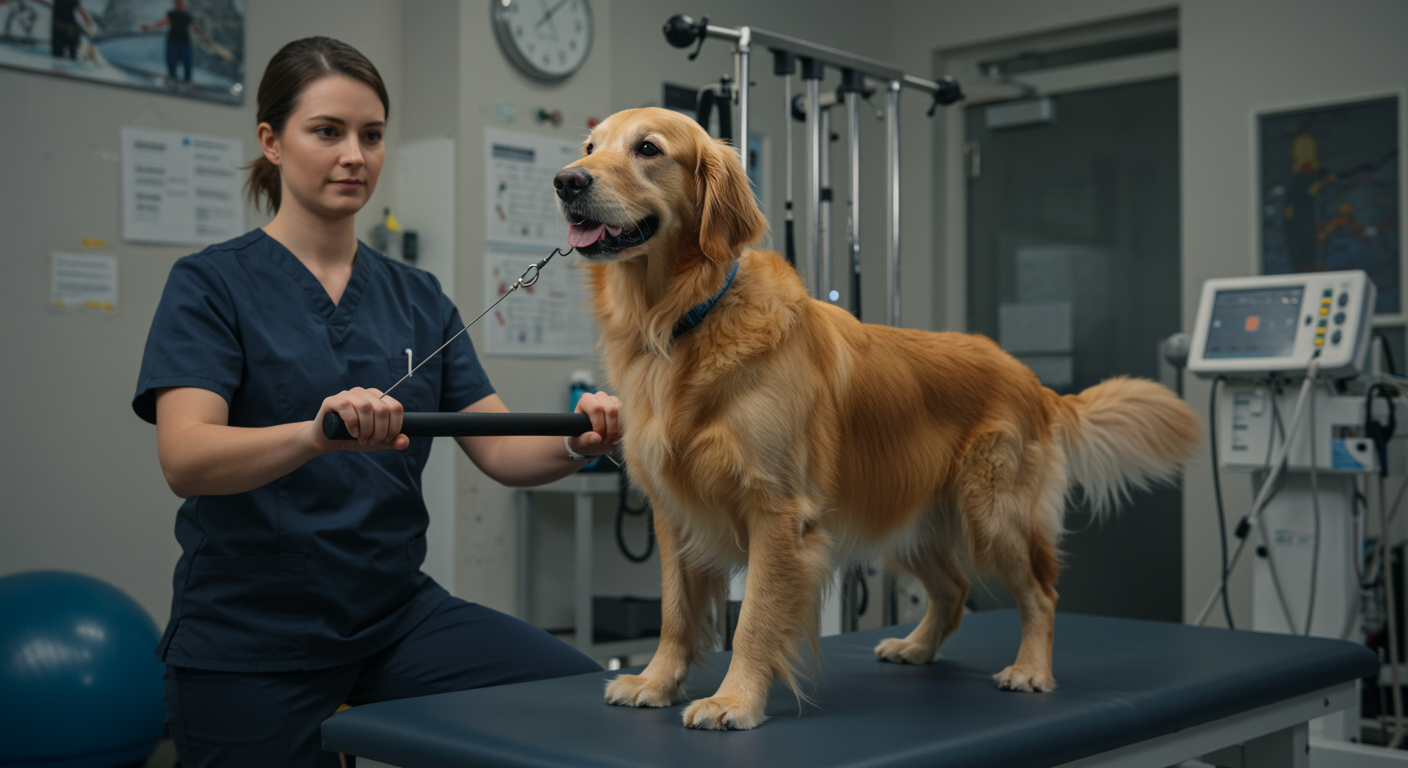
3 thoughts on “Low-Impact Exercises for Golden Retrievers with Arthritis”